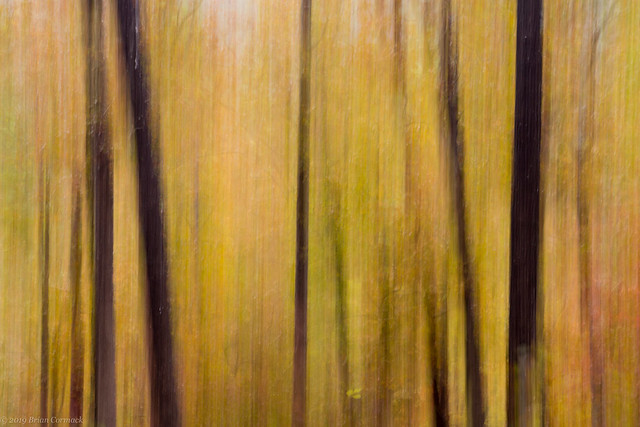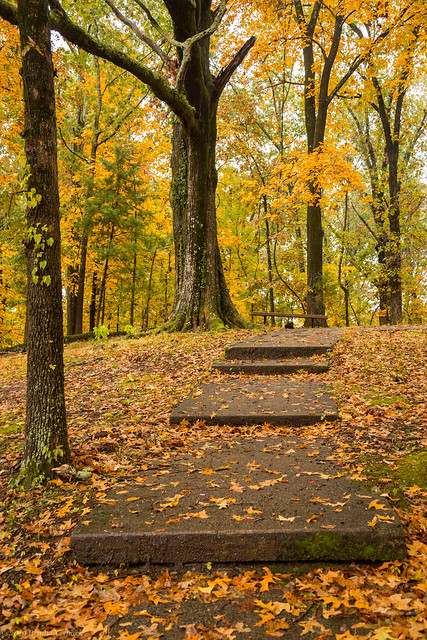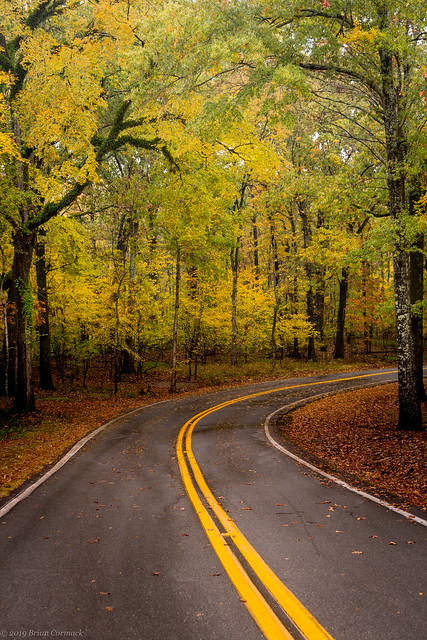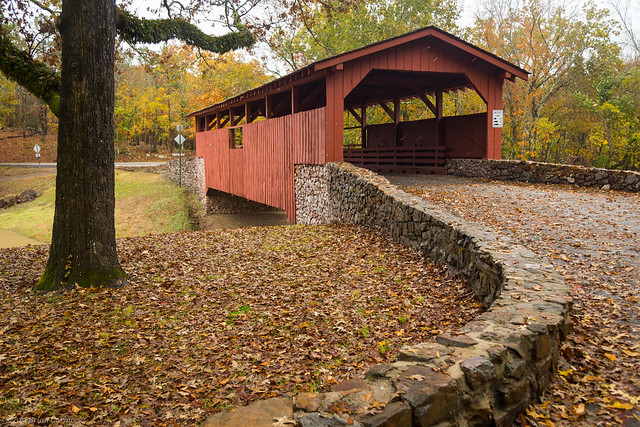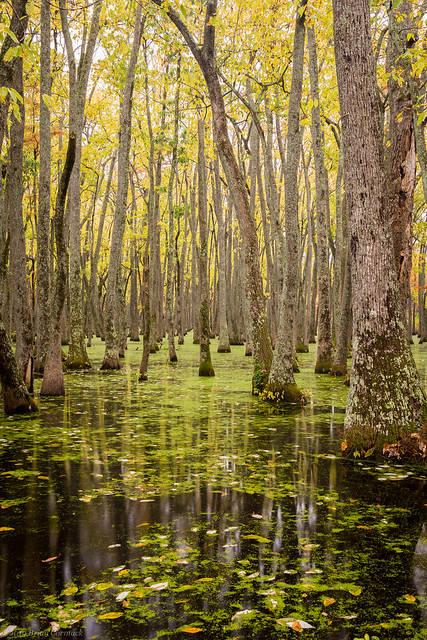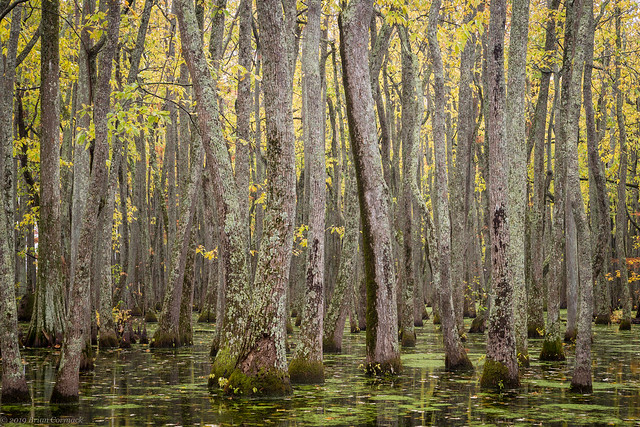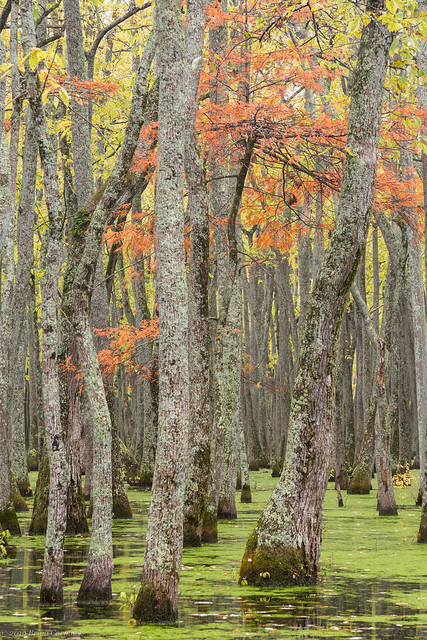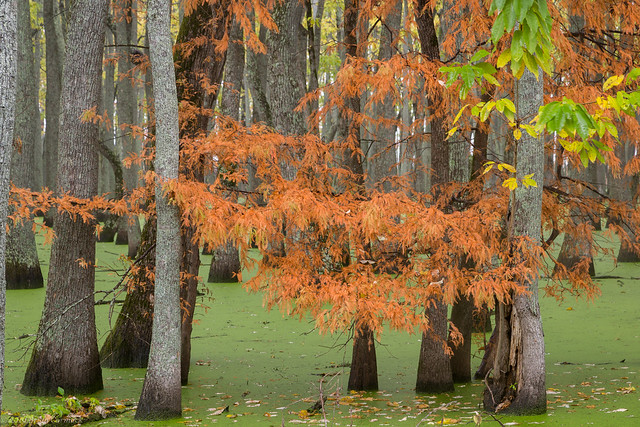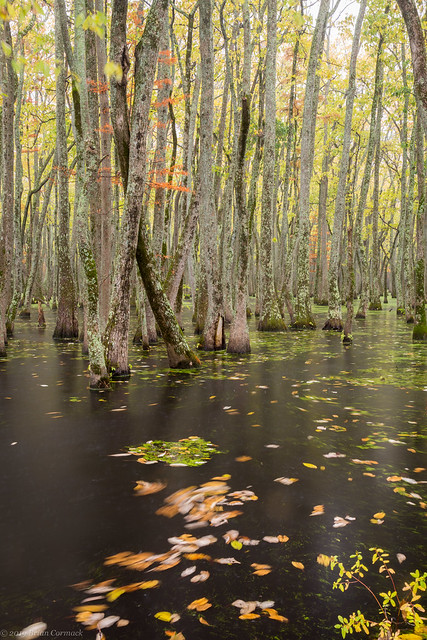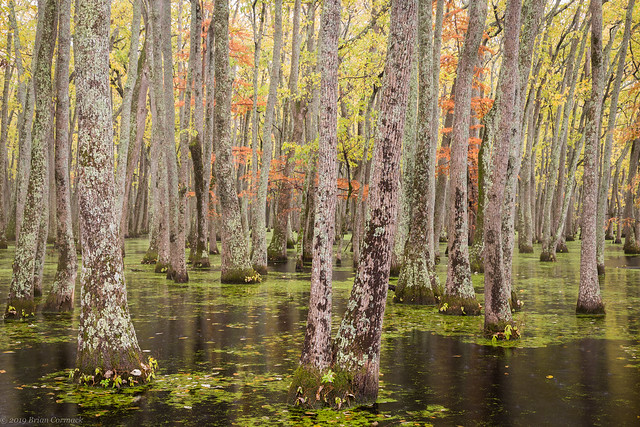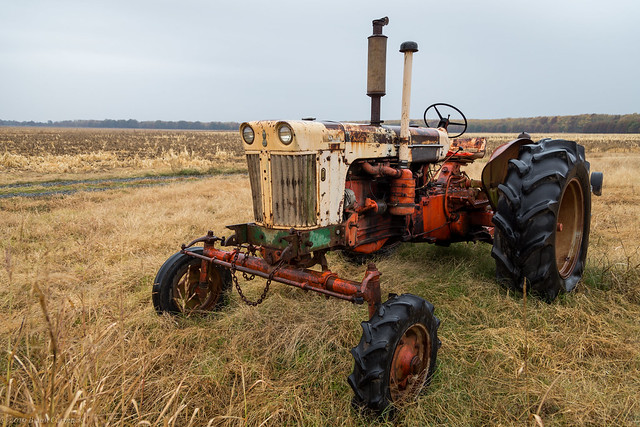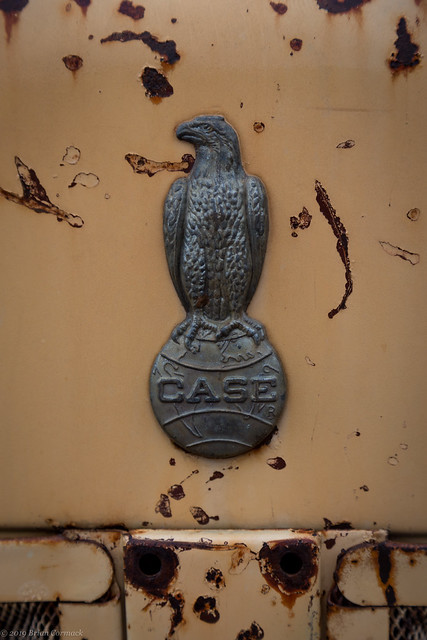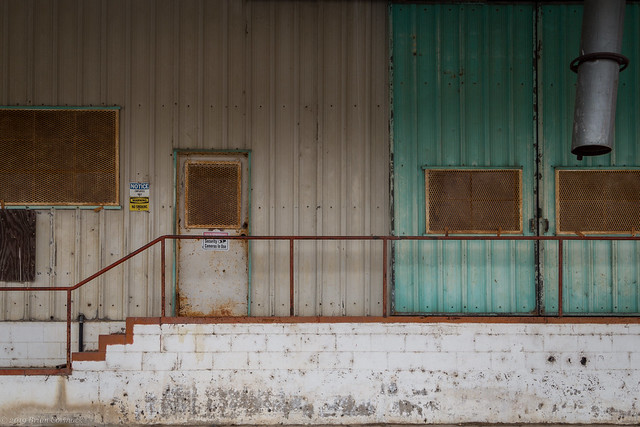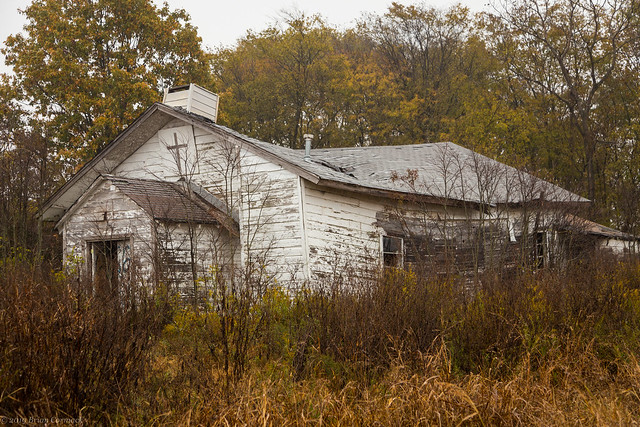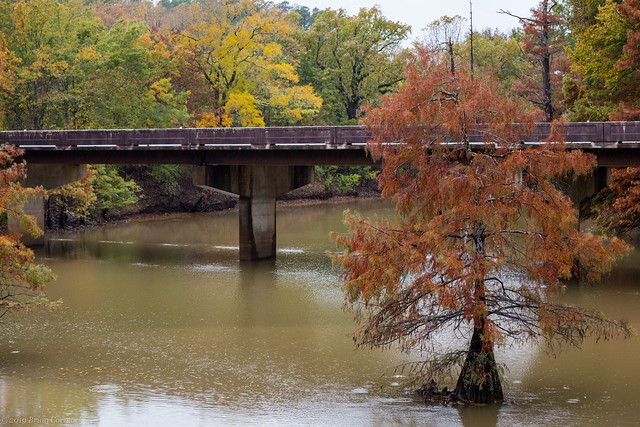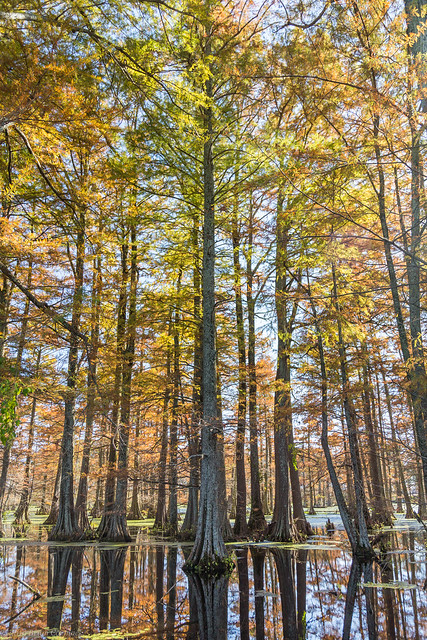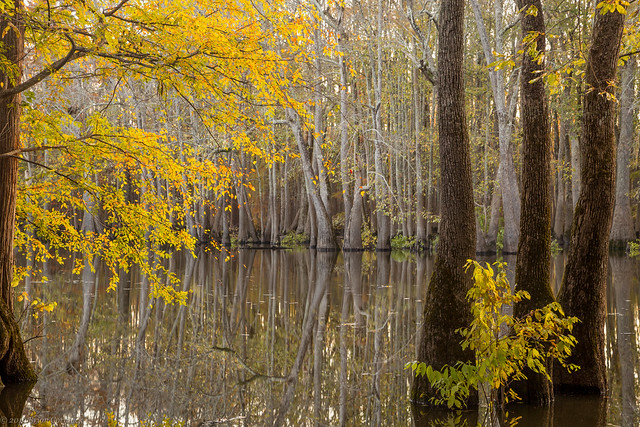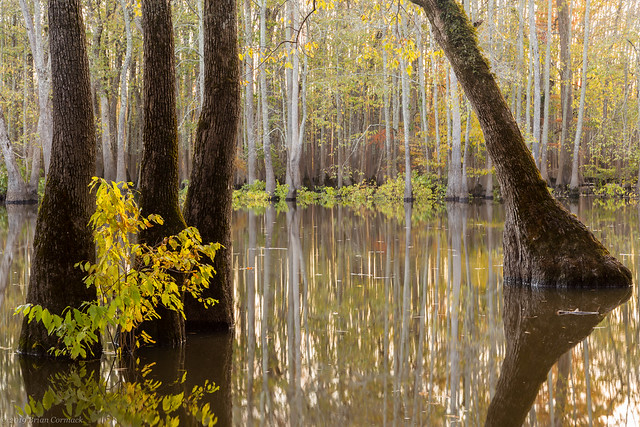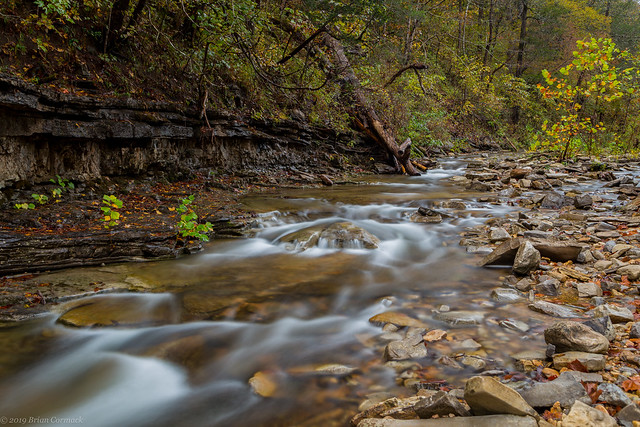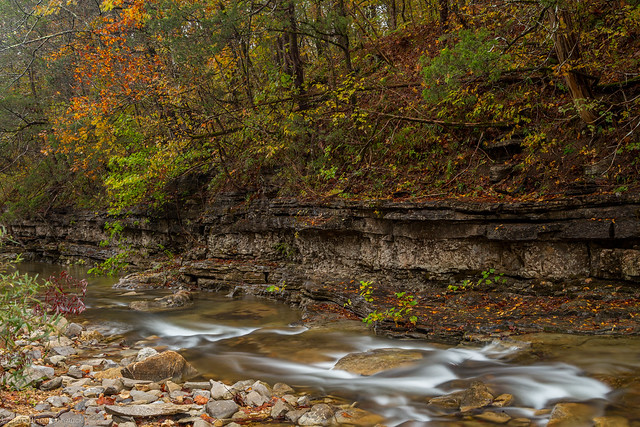The Ozark Mountains are home to a great number of springs, which range in size from small seeps to massive gushers where millions of gallons of water pour out every day. Most of the Ozark springs are in Missouri, but I believe that the prettiest spring in the Ozark Mountains is right here in Arkansas - at Blanchard Springs. The spring is small (only about 1,000 to 100,000 gallons of water flow out of the spring per minute, depending on local rainfall), but the spring tumbles out of a cave and creates a nice little waterfall.

The waters from the spring have also spent the past few million years slowly carving and creating a vast system of caverns, producing the largest cave in the state. The stalagmites, stalactites and flowstone are beautiful and well worth a tour (especially in the summer since the cave is a nice and crisp 58 degrees). When I visited for these pictures it was a cold and rainy Autumn morning. But at least this view was taken while taking shelter beneath the bluff, which thankfully kept the camera nice and dry.

It was pouring rain so I had to take these pictures while trying to awkwardly shield the camera with an umbrella. This was taken along the short and paved path that leads to the spring.

The water from the springs flow past moss-covered rocks and then passes under two stone bridges, which were built in 1935 by the Civilian Conservation Corp.

The springs are named after John Blanchard, who moved into the area after the Civil War and constructed a grist mill here. That mill was then replaced by another mill in 1900, which then operated until 1928. You can visit the ruins of that mill, which can be accessed from a wooden boardwalk that stretches into the woods. It was still raining when I went by there, with a bit of fog drifting through the trees that were showing some great fall colors.

The Civilian Conservation Corp had originally planned to completely restore the mill during the Depression, but the plans were stopped after the start of World War II. Instead the ruins were shored up and preserved, and still stand to this day.

Next to the mill is a small dam, which was expertly crafted to include a few small waterfalls.
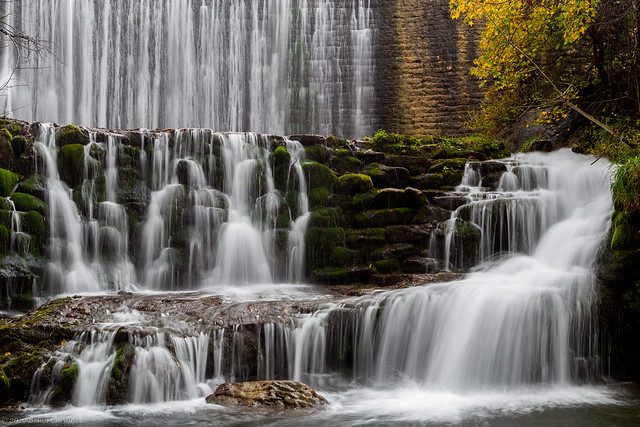
And just below the dam, a quiet pool in the creek was still enough to capture a little reflection of the waterfalls.

And a few shots from where the creek flows by the ruins of the old mill...
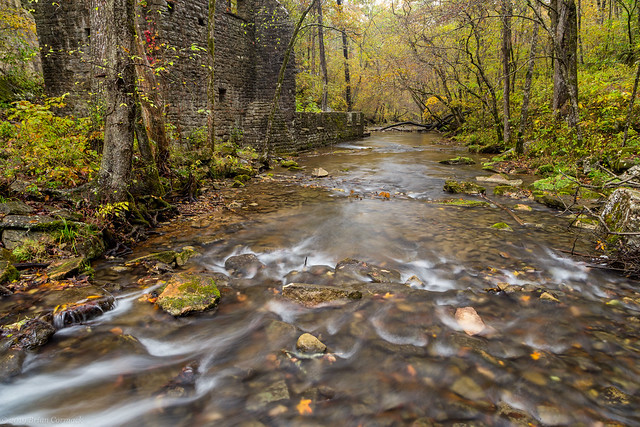

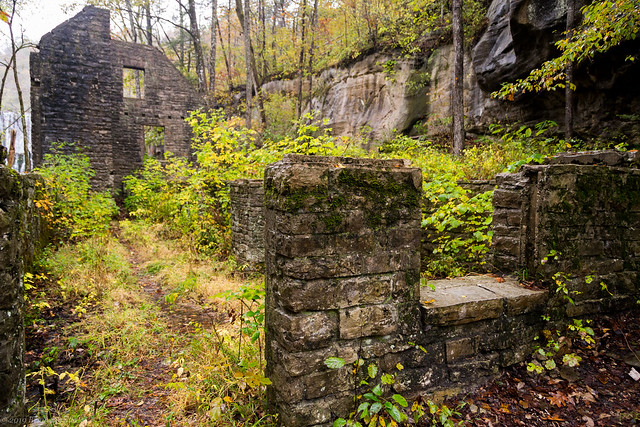
I headed back to the car, but made one more stop along the wooden walkway that passes through the woods above the mill.

I made a quick drive through the Blanchard Springs recreation area, which did have some great fall color that weekend.

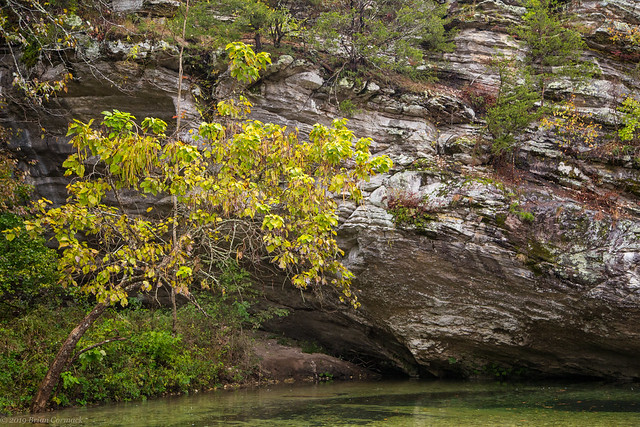
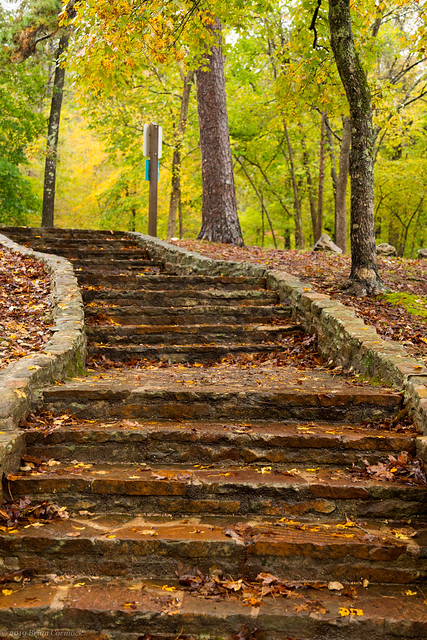
And one last shot, taken while goofing around with the camera while in a spot with some nice fall colors.
